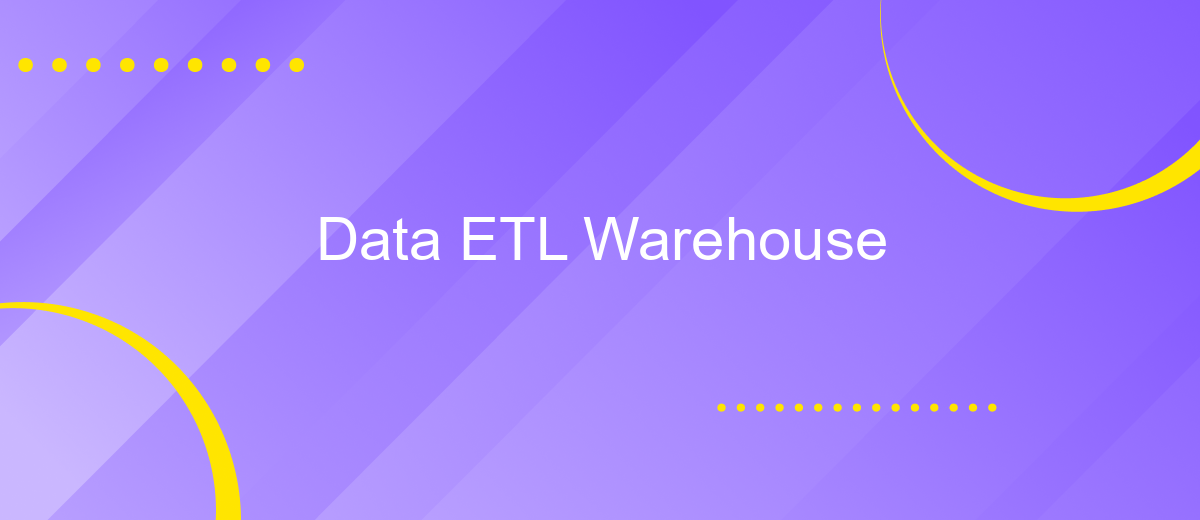Data ETL Warehouse
In today's data-driven world, the ability to efficiently extract, transform, and load (ETL) data is crucial for businesses aiming to harness the power of their data. A robust Data ETL Warehouse enables seamless integration, management, and analysis of vast datasets, providing valuable insights and driving informed decision-making. This article explores the essential components and best practices for building a high-performance Data ETL Warehouse.
Introduction
In today's data-driven world, the ability to efficiently extract, transform, and load (ETL) data is crucial for businesses aiming to make informed decisions. A Data ETL Warehouse serves as a centralized repository where data from various sources is integrated, cleansed, and stored for analysis and reporting purposes. This process not only enhances data quality but also ensures that decision-makers have access to accurate and timely information.
- Data Extraction: Collecting data from diverse sources.
- Data Transformation: Converting data into a usable format.
- Data Loading: Storing transformed data in a warehouse.
One of the key challenges in setting up a Data ETL Warehouse is managing the integration of multiple data sources. Services like ApiX-Drive simplify this process by offering seamless integration solutions. ApiX-Drive allows businesses to automate data flows between various applications, ensuring that data is consistently updated and readily available for analysis. By leveraging such services, organizations can focus more on data insights rather than the complexities of data integration.
Data Sources and Extraction

Data sources in an ETL warehouse environment can range from traditional databases, cloud storage solutions, to various APIs and third-party services. Identifying and understanding the nature of these sources is crucial for effective data extraction. Each source may have its own format, structure, and access protocols that need to be considered. For instance, relational databases might use SQL for querying, while cloud storage solutions could involve REST APIs or other methods for data retrieval.
Extraction involves fetching data from these diverse sources and ensuring its accuracy and consistency before it moves to the next stage in the ETL process. Tools like ApiX-Drive can simplify the integration process by offering pre-built connectors and automated workflows, reducing the complexity of connecting to multiple data sources. ApiX-Drive supports a wide range of integrations, allowing for seamless data extraction from various platforms, which is essential for maintaining the integrity and reliability of the ETL pipeline.
Data Transformation

Data transformation is a crucial step in the ETL (Extract, Transform, Load) process, where raw data is converted into a format suitable for analysis and reporting. This step ensures that data from disparate sources is cleaned, enriched, and standardized before being loaded into a data warehouse.
- Data Cleaning: Removing duplicates, correcting errors, and handling missing values.
- Data Enrichment: Adding relevant information to the data, such as geolocation or demographic details.
- Data Standardization: Converting data into a consistent format, such as standardizing date formats or measurement units.
- Data Aggregation: Summarizing data to provide insights, such as calculating averages or totals.
- Data Integration: Combining data from different sources into a single, cohesive dataset.
Tools like ApiX-Drive facilitate seamless data integration by automating the transfer and transformation of data between various applications and services. By leveraging such tools, businesses can streamline their ETL processes, ensuring that data transformation is both efficient and accurate. This ultimately leads to more reliable data-driven decision-making.
Data Loading and Integration

Data loading and integration are crucial processes in the ETL (Extract, Transform, Load) pipeline that ensure data from various sources is consolidated into a centralized warehouse. The loading phase involves transferring transformed data into the target storage system, while integration focuses on combining data from disparate systems into a unified format.
Effective data integration requires meticulous planning and the use of specialized tools to handle diverse data formats and sources. One such tool is ApiX-Drive, which simplifies the integration process by providing a user-friendly interface and pre-built connectors for various applications and databases.
- Automated data synchronization
- Real-time data updates
- Support for multiple data sources
- Customizable workflows
By leveraging tools like ApiX-Drive, organizations can streamline their data integration processes, reduce manual intervention, and ensure data consistency across their systems. This ultimately leads to more reliable data insights and informed decision-making.


Data Warehouse Management
Effective Data Warehouse Management is crucial for ensuring that data is accurate, consistent, and accessible. This involves organizing and maintaining the data warehouse infrastructure, which includes tasks such as data integration, data cleaning, and data transformation. One of the key aspects of managing a data warehouse is ensuring that data from various sources is accurately integrated. This can be achieved through automated tools and services that simplify and streamline the integration process.
ApiX-Drive is a powerful service that can significantly aid in the integration of data from multiple sources into your data warehouse. By using ApiX-Drive, organizations can automate the data transfer process, reducing the risk of errors and saving valuable time. This service supports a wide range of applications and systems, making it easier to maintain a cohesive and well-managed data warehouse. By leveraging such tools, businesses can ensure that their data warehouse remains a reliable and efficient resource for data analysis and decision-making.
FAQ
What is ETL in the context of data warehousing?
Why is ETL important for data warehousing?
What are the common challenges faced during ETL processes?
How can automation improve the ETL process?
What should I consider when choosing an ETL tool?
Time is the most valuable resource for business today. Almost half of it is wasted on routine tasks. Your employees are constantly forced to perform monotonous tasks that are difficult to classify as important and specialized. You can leave everything as it is by hiring additional employees, or you can automate most of the business processes using the ApiX-Drive online connector to get rid of unnecessary time and money expenses once and for all. The choice is yours!

